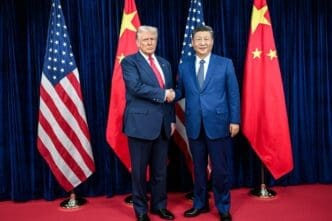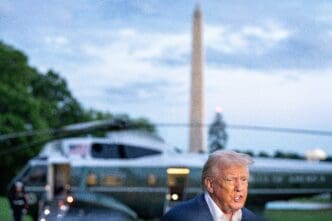Executive Summary
The Story So Far
Why This Matters
Who Thinks What?
The Supreme Court is set to begin hearing arguments this week in a landmark case that challenges President Donald Trump’s authority to impose tariffs under the International Emergency Economic Powers Act (IEEPA), a move he has called “one of the most important cases in the history of our country.” The outcome could significantly impact nearly $90 billion in tariff revenue and reshape the administration’s trade agreements, which rely heavily on the president’s ability to levy import taxes.
The Legal Challenge
The core of the case revolves around whether Trump had the legal standing to use IEEPA to implement import tax rates as high as 50% on key trading partners like India and Brazil, and up to 145% on China earlier this year. While a ruling against Trump would not immediately cancel all existing tariffs, it is expected to necessitate a radical shift in his economic strategy.
There has been speculation that Donald Trump might make an unprecedented appearance at the nation’s highest court, underscoring the perceived importance of the case to his administration.
Financial Implications
As of September 23, American businesses have paid nearly $90 billion to cover the IEEPA tariffs currently under challenge, according to data from US Customs and Border Patrol. This sum represents more than half of the total tariff revenue collected by the country during the 2025 fiscal year, which concluded on September 30.
Donald Trump suggested in a Fox Business interview that a Supreme Court decision against him would require the government to reimburse companies for the billions already paid. However, the process for businesses to receive refunds would likely be complex and prolonged, with trade attorneys indicating to CNN that the justices would determine refund eligibility if the IEEPA tariffs are ultimately deemed illegal.
Impact on Trade Agreements
The ability to swiftly impose higher tariffs has been a crucial tool for Trump in pressing countries into new trade agreements. These agreements often involve commitments from trading partners to increase purchases of American goods, boost investments in American businesses, and lower their own tariffs on U.S. exports.
Should the Supreme Court rule against President Trump, these existing trade agreements could be jeopardized. Dave Townsend, a partner in Dorsey & Whitney’s International Trade Group, noted that while the Trump administration would likely assert the agreements remain valid, trading partners might be incentivized to seek renegotiations or even impose retaliatory tariffs on American exports.
Future Tariff Authority
Regardless of the Supreme Court’s decision on IEEPA, U.S. presidents retain an extensive array of tariff-imposing powers. Trump has also frequently utilized Section 232 tariffs, which permit higher tariffs on national security grounds following an investigation by the Commerce Department.
Section 232 tariffs have been applied to sectors such as autos, auto parts, steel, aluminum, copper, and furniture. While these powers will remain available to Trump, the IEEPA tariffs offer a unique flexibility, allowing for changes to import duties with a speed and ease not afforded by other tariff mechanisms.








